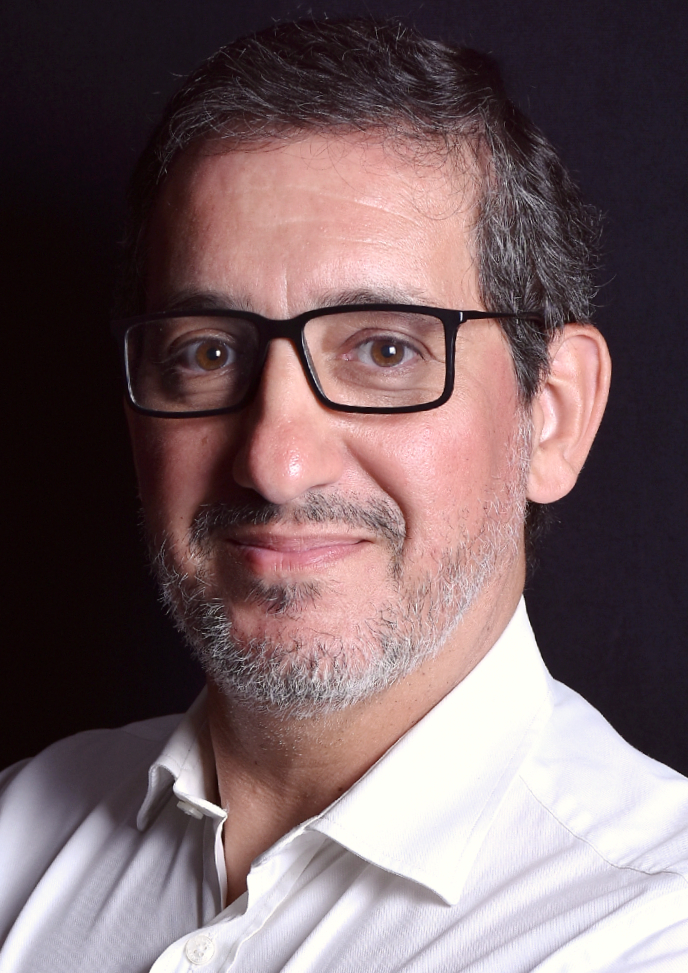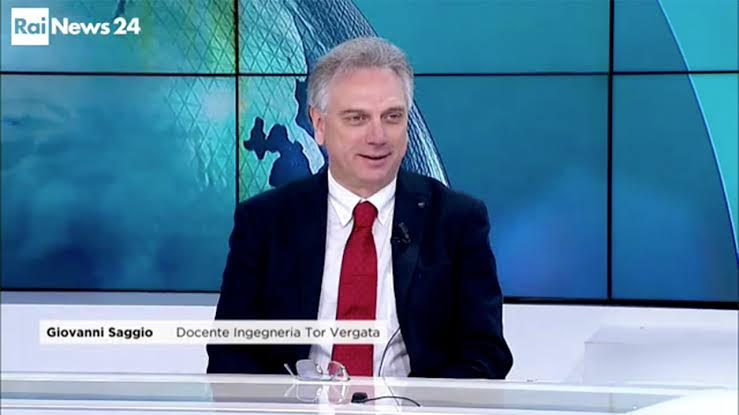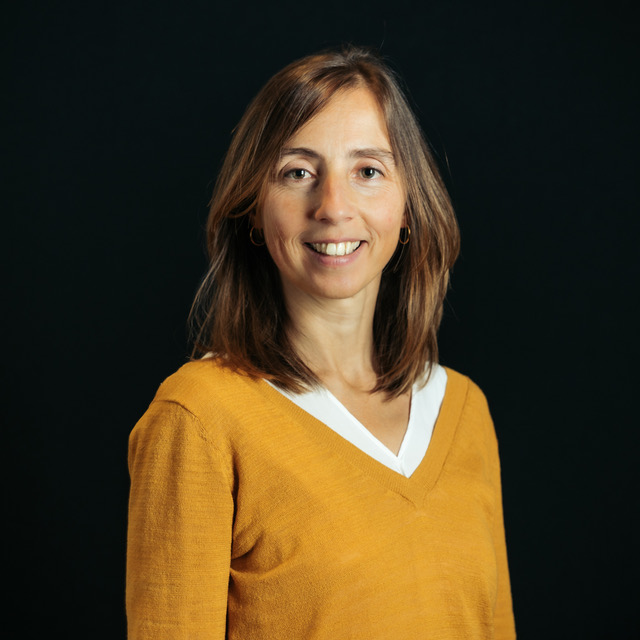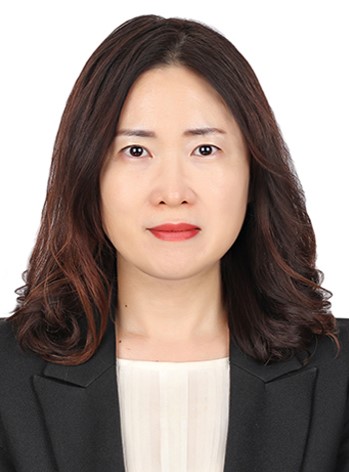2025年国际医学人工智能大会讲者介绍

Hugo Gamboa 教授
葡萄牙新里斯本大学 / NOVA University of Lisbon
报告题目/Title:《量化自我》/ The Quantified Self
报告摘要:本次演讲将展示我们在自我追踪过程中采用的多元机制——通过整合网页浏览记录、使用习惯、手机操作数据、数十个手机传感器采集的信息,以及用于监测活动和健康的各类智能手环数据,构建全方位的个人量化体系。面对这些多维度的数据来源,我们需要思考几个根本性问题:自我量化的意义何在?如何从海量监测数据中提取真正价值?谁掌握着这些数据的所有权?我们将深入探讨如何借助"量化自我"运动来提升自己或在此过程中支持他人。
Abstract: In this talk, we will showcase the mechanisms we use to track ourselves in this process of joining as much information as possible based on our browsing history and habits, our mobile phone usage, the information extracted from the dozens of sensors on the mobile phone and the many bracelets we wear to track our activities and health. From the multiple sources of data collection, several questions arise: Why do I want to quantify my life? Can I extract value and make sense from all this pervasive information gathering? Who owns my data? We will discuss the opportunities to utilise the quantified self-movement to improve myself or support others in this process.
个人简介:雨果·甘博亚(Hugo Gamboa)现任葡萄牙新里斯本大学科技学院物理系正教授,并担任LIBPHYS实验室主任。他毕业于里斯本大学高等技术学院,获电气与计算机工程博士学位。作为弗劳恩霍夫葡萄牙研究中心高级科学家,他负责协调里斯本办公室智能系统研究团队。甘博亚教授是医疗无线传感器领域科技初创企业PLUX的创始人兼总裁,该公司专注于微电子技术、生物信号处理及软件开发。他在LIBPHYS实验室领导的科研团队在医疗仪器、生物信号处理及机器学习在生物信号中的应用方面具有深厚造诣。已发表期刊论文60余篇,专著章节15篇,精选论文集10部,会议论文110篇,现为IEEE高级会员。
Brief Bio: Hugo Gamboa is a Full Professor at the Physics Department of the Nova School of Science and Technology of the NOVA University of Lisbon and Director of LIBPHYS. He is an Adjunct Professor at the School of Artificial Intelligence, Nanjing University of Information Science and Technology. He got his PhD in Electrical and Computer Engineering from the Instituto Superior Técnico, University of Lisbon. As a Senior Scientist at Fraunhofer Portugal, coordinates the Lisbon Office research group, which focuses on Intelligent Systems. He is the founder and President of PLUX, a technology-based, innovative startup in the field of wireless medical sensors, focusing on microelectronics, biosignal processing, and software development. He leads a research team on LIBPHYS, with expertise in medical instrumentation, biosignal processing, and machine learning applied to biosignals. Published more than 60 Journal Papers; 15 Book Chapters; 10 books (selected best papers); 110 Conference Papers. He is an IEEE Senior member.

Giovanni Saggio 教授
意大利罗马第二大学 / University of Rome Tor Vergata
报告题目/Title:《传感手套》/ Sensory gloves
报告摘要:在可穿戴电子设备领域,传感手套(Sensory Gloves,简称SGs)具有特殊地位。该设备通过内置传感器精准捕捉手部及手指运动数据,这一核心功能使其在虚拟现实、机器人技术、人机交互及医疗等领域发挥着基础性或关键性作用。通过实时采集与传输感知数据,传感手套不仅能提升用户在模拟环境中的操控体验,还可增强辅助技术的实用性,因而成为工业与医疗领域的重要工具。
Abstract: Among wearable electronic devices, sensory gloves (SGs) play a special role. SGs are equipped with sensors that essentially measure hand and finger movements. This capability can be fundamental or play a significant role in various fields, such as virtual reality, robotics, human-computer interaction, and the medical field. By acquiring and transmitting sensory data in real-time, they enhance the user experience and control in simulated environments or assistive technologies, making them a valuable tool for both industrial and medical applications.
个人简介:乔瓦尼·萨乔(Giovanni Saggio)教授,1991年获电子工程学士学位,1996年获微电子与通信博士学位,现任意大利罗马第二大学(托尔维加塔大学)副教授。作为斯坦福大学全球前2%顶尖科学家(2020-2024连续四年入选),同时担任INSTICC(信息控制与通信系统技术研究所)特聘研究员。2020至2022年间,他作为欧盟委员会"预防性医疗"国际专家组(IDIH)协调员,主导了涵盖日本、韩国、美国、中国及加拿大的国际合作项目。萨乔教授已出版多部专著及九本电子学领域教材,系CRC出版社特约作者,发表学术论文200余篇,担任多家期刊专题主编/客座编辑及编委会成员,持有十二项专利,并创立三家衍生企业:Captiks有限公司、Seeti有限公司及Voicewise有限公司。
Brief Bio: Giovanni Saggio graduated in Electronic Engineering (1991), PhD in Microelectronics and Telecommunication (1996), currently Associate Professor at the University of Vergata, Rome, Italy. He is in the TOP 2% most influential Scientists (Stanford University ranking, 2020-21, 2021-22, 2022-23, 2023-24) and appointed Distinguished Researcher (Institute for Systems and Technologies of Information, Control and Communication, INSTICC). He was the coordinator of the International “Expert Group” IDIH (International Collaboration Digital Transformation Healthy Ageing), for the European Commission, involving Japan, South Korea, USA, China, Canada) on “Preventive Care” (2020-2022). He is the author of several monographs and nine books on Electronics, is a featured author for CRC Press, author/coauthor of 200+ publications, Topic/Guest/Academic Editor and Section Board/Editorial Board Member for different Journals, granted twelve patents and founded three Spinoffs: Captiks Srl, Seeti Srl, Voicewise Srl.

Ana Rita Londral 教授
葡萄牙新里斯本大学/NOVA Univeristy of Lisbon
报告题目/Title:《从研究到实践:使命导向型协作团队在医疗创新中的关键作用》/ Translating Research into Practice: The Role of Collaborative, Mission-Oriented Teams in Healthcare Innovation
报告摘要:本次演讲将揭示协作实验室中的跨学科团队如何通过技术融合与深度用户洞察来驱动研究创新。我将阐释三个关键转化路径:基于现实问题导向的研发机制、持续闭环的用户参与模式,以及使命驱动的科研方法论——这些要素共同构成了从创新理念到临床实用解决方案的转化桥梁。
Abstract: This talk will share how multidisciplinary teams in collaborative labs drive research and innovation by combining technology with a deep understanding of the people who use it. I will explore how real-world problem-solving, continuous user engagement, and mission-oriented research can help transform ideas into impactful solutions that align with everyday practice.
个人简介:安娜·丽塔·隆德拉尔(Ana Rita Londral)教授拥有里斯本大学电气与计算机工程学士学位及生物医学科学(神经科学方向)博士学位,现任葡萄牙新里斯本大学助理教授,并担任Value for Health协作实验室主任,同时兼任综合健康研究中心的资深研究员。她在医疗工程、数字健康及人工智能驱动的医疗创新领域拥有逾20年研究经验,主要致力于临床决策支持系统的数字工具开发与预测分析应用,其研究成果在AI患者监护、疾病进展建模及数字健康技术与临床工作流整合方面具有重要突破。作为20余项国内外研发项目(含多项欧盟资助计划)的核心成员,她成功实现了技术研发向临床实践的转化应用,并持续评估其规模化潜力与医疗价值。
Brief Bio: Ana Londral studied Electrical and Computer Engineering and holds a PhD in Biomedical Sciences with a specialization in Neurosciences from the University of Lisbon. She is an Assistant Professor at Nova University of Lisbon and directs a collaborative laboratory, Value for Health CoLAB. She is also an integrated researcher at the Comprehensive Health Research Centre. She brings over 20 years of experience in medical engineering, digital health, and AI-driven healthcare innovation. Her work focuses on developing and implementing digital tools and predictive analytics for clinical decision support, with significant contributions to AI-powered patient monitoring, disease progression modelling, and the integration of digital health technologies into clinical workflows. She has joined more than 20 national and international R&D projects, including several EU-funded initiatives, translating technology research into practical healthcare applications and assessing their scalability and impact.

周挥宇/Huiyu Zhou 教授
英国莱斯特大学/University of Leicester
报告题目/Title: 当组织病理遇见人工智能/ When histopathology meets AI
报告摘要:数字病理的定量分析在临床诊断及特定治疗方案制定依据解析中发挥着关键作用。组织病理切片能完整呈现疾病特征及其对人体组织的影响,其中病理图像的自动化分析持续吸引着机器学习领域的广泛关注。本次演讲将系统阐述我们在病理图像定量分析领域的最新研究成果:首先,提出一种高效的结直肠肿瘤多尺度分割方法,通过RGB色彩模型与直方图距离优化实现精准的感兴趣区域提取,并采用基于随机投影的L2范数稀疏表征获得理想的分类效果;其次,针对病理图像染色与扫描导致的色彩归一化难题,创新性提出无监督双通道表征学习模型;最后,报告一项受非负矩阵分解(NMF)启发的无监督深度学习方法,可将输入图像解构为染色基质矩阵与染色浓度矩阵,实现突破性的染色分离效果。
Abstract: Quantitative analysis of digital pathology has played an important role in clinical diagnosis and understanding of the underlying reasons for specific treatments being deployed. Histopathological slides provide a comprehensive view of individual diseases and their effects on human tissues, where automated analysis of histopathology imagery continuously attracts the attention of the machine learning community. In this talk, I will summarise our recent works in the quantitative analysis of histopathology images. First of all, I introduce an efficient multi-scale approach for colorectal tumour segmentation. Our method applied an RGB colour model and histogram distance for refining the region of interest extraction. We deployed a random projection-based L2-norm sparse representation to achieve satisfactory classification results. Secondly, we have proposed an unsupervised dual-channel representation learning model to deal with the challenges in colour normalisation due to staining and scanning of histopathology images. Finally, we report a novel unsupervised deep learning method for stain separation, inspired by Non-Negative Matrix Factorisation (NMF) that decomposes the input image into a stain colour matrix and a stain concentration matrix.
个人简介:周挥宇教授先后获得中国华中科技大学无线电技术专业工学学士学位、英国邓迪大学生物医学工程理学硕士学位,以及英国爱丁堡赫瑞瓦特大学计算机视觉哲学博士学位。现任英国莱斯特大学计算与数理科学学院正教授,累计发表学术论文600余篇。担任《Recent Advances in Electrical & Electronic Engineering》主编,以及《IEEE人机系统汇刊》《IEEE生物医学与健康信息学杂志》《模式识别》《PeerJ计算机科学》《IEEE Access》五大期刊副主编,同时担任国际机器人大会(ICRA)、国际人工智能联合会议(IJCAI)和英国机器视觉大会(BMVC)的领域主席。其研究项目获英国工程与物理科学研究理事会(EPSRC)、医学研究理事会(MRC)、欧盟委员会、英国皇家学会、利华休姆信托基金会、帕芬信托基金会、英国阿尔茨海默症研究中心、北爱尔兰投资局及工业界持续资助。周教授的个人主页: https://le.ac.uk/people/huiyu-zhou。
Brief Bio: Prof. Huiyu Zhou received a Bachelor of Engineering degree in Radio Technology from Huazhong University of Science and Technology of China and a Master of Science degree in Biomedical Engineering from the University of Dundee in the United Kingdom, respectively. He was awarded a Doctor of Philosophy degree in Computer Vision from Heriot-Watt University, Edinburgh, United Kingdom. Dr. Zhou is currently a full Professor at the School of Computing and Mathematical Sciences, University of Leicester, United Kingdom. He has published over 600 peer-reviewed papers in the field. Dr. Zhou serves as the Editor-in-Chief of Recent Advances in Electrical & Electronic Engineering and Associate Editor of "IEEE Transactions on Human-Machine Systems", “IEEE Journal of Biomedical and Health Informatics”, “Pattern Recognition”, “PeerJ Computer Science” and “IEEE Access”, and Area Chair of ICRA, IJCAI and BMVC. His research work has been or is being supported by UK EPSRC, MRC, EU, Royal Society, Leverhulme Trust, Puffin Trust, Alzheimer’s Research UK, Invest NI and industry. Homepage: https://le.ac.uk/people/huiyu-zhou

Jungsil Kim(金贞实)
韩国庆北大学/Kyungpook National University
报告题目/Title: Fibulin-4 缺陷小鼠升主动脉瘤出生后发育过程中心血管力学和功能的评估/Evaluation of Cardiovascular Mechanics and Function During Postnatal Development of Ascending Aortic Aneurysms in Fibulin-4 Deficient Mice
报告摘要: 升主动脉瘤(AAAs)以主动脉进行性扩张为特征,是一种与细胞外基质(ECM)缺陷相关的致命性疾病。作为ECM关键组分,Fibulin-4蛋白在弹性纤维组装和血管完整性维持中起核心作用。本研究通过平滑肌细胞特异性Fibulin-4敲除(SMKO)小鼠模型,系统探究了AAA出生后发展过程中心血管力学特性与心脏功能的动态变化。研究采用离体被动生物力学测试和超声心动图技术,多时间点评估了主动脉壁力学性能与心脏功能的演变规律。研究发现:SMKO小鼠在动脉瘤发展过程中出现早发性主动脉扩张,升主动脉僵硬度与顺应性发生显著改变,证实Fibulin-4缺失导致血管结构完整性丧失;同时伴随心肌肥厚、射血分数降低及收缩功能受损等心功能异常。这些发现揭示了Fibulin-4相关动脉瘤形成过程中主动脉壁力学特性与心脏功能的耦联关系,为AAA的病理生理进展机制提供了新见解,强调了ECM完整性对维持心血管稳态的重要作用。
Abstract: Ascending aortic aneurysms (AAAs), which are characterized by the progressive dilation of the ascending aorta, are life-threatening conditions associated with extracellular matrix (ECM) defects. Fibulin-4, an essential ECM component, plays a crucial role in elastic fibre assembly and vascular integrity. In this study, we investigated cardiovascular mechanics and function of the heart during the postnatal development of AAAs in smooth muscle-specific Fibulin-4 knockout (SMKO) mice. To this end, we evaluated the changes in aortic wall mechanics and cardiac performance at multiple postnatal stages using ex vivo passive biomechanical testing and echocardiography. SMKO mice exhibited early-onset aortic dilation and altered stiffness and compliance in the ascending aorta during aneurysm development, indicating a loss of structural integrity due to Fibulin-4 deficiency. Furthermore, SMKO mice developed cardiac hypertrophy, accompanied by reduced ejection fraction and impaired contractile function. These findings highlight the relationship between aortic wall mechanics and cardiac function during Fibulin-4–related aneurysm formation. Our results provide new insights into the pathophysiological progression of AAAs and underscore the importance of ECM integrity in maintaining cardiovascular homeostasis.
个人简介:金贞实(Jungsil Kim)现任韩国庆北国立大学智能生物产业机械工程系助理教授。她于美国密歇根州立大学获得机械工程博士学位,2013至2017年间在华盛顿大学机械工程与材料科学系Wagenseil实验室从事博士后研究。其研究领域涵盖:生物力学、软组织工程、生物材料、组织再生、力学生物学、生物医学成像、生命物质力学特性、药用作物及植物工厂等前沿方向。
Brief Bio: Jungsil Kim is an assistant professor in the Department of Smart Bio-Industrial Mechanical Engineering, Kyungpook National University, Daegu, Korea. She earned her Ph.D. in Mechanical Engineering from Michigan State University. She worked as a postdoctoral fellow in the Wagenseil laboratory at Washington University's Department of Mechanical Engineering and Materials Science from 2013 to 2017. Her research interests include biomechanics, soft tissue, biomaterials, tissue regeneration, mechanobiology, biomedical imaging, the mechanical properties of living matter, medical crops, and plant factories.

Hamada Rizk
日本大阪大学/Osaka Univeristy
报告题目/Title:智能空间中的智慧照护: 跨环境位置-行为-移动的隐私保护型人工智能
/Smart Care for Smart Spaces: Privacy-Conscious AI for Location, Behavior, and Mobility Across Environments.
报告摘要:人工智能(AI)与传感技术的融合正在重塑人机环境交互范式。从智慧城市、自主系统到个性化医疗和数字孪生,AI驱动方案正在构建更具响应性、适应性和以人为本的空间。本次演讲将重点探讨智能传感与隐私保护AI在室内定位、行为理解和移动优化中的突破性应用,尤其关注应急响应和老年护理等高影响力场景。我们将展示基于AI的定位技术和无感活动识别的最新进展——这些技术优先保障隐私、适配多样物理环境并实现规模化泛化能力。此外,还将介绍我们在护理机构移动优化方面的研究成果,重点阐释城市医疗环境中兼顾运营效率与隐私保护的实用部署策略。通过隐私感知的感知-决策一体化架构,以及面向数据/基础设施薄弱地区的AI普惠方案,这些技术能直接提升安全性、减轻老年人负担,并构建更具适应性与尊严的照护环境。该技术体系在设计之初即考量了可扩展性与责任伦理,始终与新一代医疗系统的演进需求保持同步。
Abstract: The convergence of artificial intelligence (AI) and sensing technologies is redefining how humans interact with their environments. From smart cities and autonomous systems to personalized healthcare and digital twins, AI-driven solutions are fostering more responsive, adaptive, and human-centric spaces. This talk explores the role of intelligent sensing and privacy-preserving AI in advancing indoor positioning, behavior understanding, and mobility optimization, with particular attention to high-impact applications such as emergency response and elderly care. We present recent advancements in AI-based localization and unobtrusive activity recognition, utilizing wireless sensing modalities and proprietary LiDAR-based systems. These methodologies prioritize privacy, support adaptability across diverse physical settings, and enable generalizability at scale. In addition, we introduce our work on optimizing nursing mobility in care facilities, highlighting practical deployment strategies that balance operational effectiveness with privacy protection in urban healthcare environments. By integrating perception and decision-making in a privacy-conscious manner, and by democratizing AI for regions with limited data or infrastructure, these technologies directly enhance safety, reduce the burden on older adults, and support more adaptive and respectful care environments. Designed with scalability and responsibility in mind, they remain aligned with the evolving needs of next-generation healthcare systems.
个人简介:滨田理一(Hamada Rizk)现任日本大阪大学副教授,IEEE高级会员。他于2016年和2020年分别获得坦塔大学与埃及-日本科技大学(E-JUST)计算机科学与工程专业硕士及博士学位,同时担任日本理化学研究所计算科学中心首席科学家,参与日本旗舰超级计算机"富岳"项目,并任Hulix-Tech株式会社高级技术顾问。其研究涵盖移动普适计算、空间智能与人工智能三大领域,主导或参与埃及、美国、日本等多国学术机构与企业的资助项目。作为连续六年(2019-2024)斩获ACM SIGSPATIAL竞赛金、银、铜奖的团队领导者,他还联合创立了埃及B-oN与日本Hulix-Tech等科创企业,并获德国HLF基金会(2019)、谷歌(2019&2020)、英伟达(2022)"杰出青年科学家"称号,更于2023年荣膺IEEE日本奖章这一权威荣誉。
Brief Bio: Hamada Rizk is an Associate Professor at the University of Osaka, Japan, and an IEEE Senior Member. He received his M.E. and Ph.D. degrees in Computer Science and Engineering from Tanta University and the Egypt-Japan University of Science and Technology (E-JUST) in 2016 and 2020, respectively. He is also a Principal Scientist at the RIKEN Center for Computational Science, contributing to Japan’s flagship supercomputing project, Fugaku, and serves as Senior Technical Advisor at Hulix-Tech Inc. His research interests include mobile and pervasive computing, spatial intelligence, and artificial intelligence. He has led or contributed to numerous projects funded by academic and industrial organizations in Egypt, the United States, Japan, and other countries. He is also a co-founder of several startups, including B-oN in Egypt and Hulix-Tech in Japan. Hamada’s team has won multiple awards, securing gold, silver, and bronze medals in the ACM SIGSPATIAL competition for six consecutive years (2019–2024). He has been recognized as an outstanding young researcher by the HLF Foundation in Germany (2019), Google (2019 & 2020), and NVIDIA (2022). Among his many accolades, he is also a recipient of the prestigious IEEE Japan Medal 2023.
https://mc.net.ist.osaka-u.ac.jp/en/